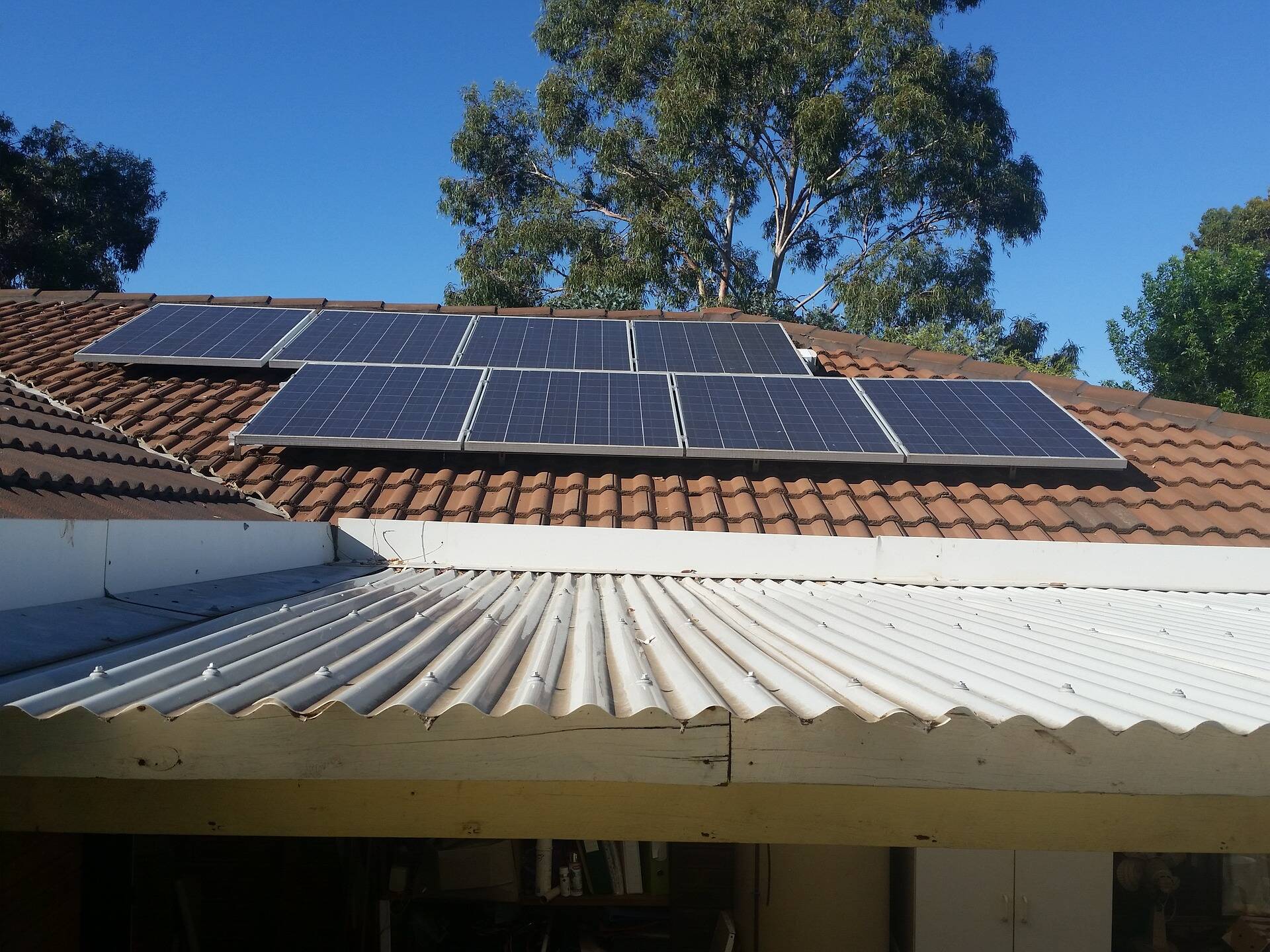You’ve reached your limit!
To continue enjoying Utility Week Innovate, brought to you in association with Utility Week Live or gain unlimited Utility Week site access choose the option that applies to you below:
Register to access Utility Week Innovate
- Get the latest insight on frontline business challenges
- Receive specialist sector newsletters to keep you informed
- Access our Utility Week Innovate content for free
- Join us in bringing collaborative innovation to life at Utility Week Live

Energy Web CEO Jesse Morris reflects on the role of blockchain-based technology in recent efforts to enhance the position of Australia and California’s distributed energy assets in their respective grids.
In a short September spell, both the Australian Energy Market Operator (AEMO) and the California Independent System Operator (ISO) unveiled blockchain-based innovations to allow them to streamline the participation of distributed energy resources, such as rooftop solar and electric vehicles, in their energy grids.
As per tech corporation IBM’s definition, blockchain provides a “single view of the truth” by assigning unique and immutable identities to both tangible and intangible assets so that they can be tracked, and their authenticity guaranteed.
New blueprint for asset integration
 On 2 September, AEMO announced Energy Web – a Switzerland-based spin-out of the Rocky Mountain Institute building decentralised, open-source operating systems for clean-energy using technology such as blockchain – among its partners for The EDGE Project.
On 2 September, AEMO announced Energy Web – a Switzerland-based spin-out of the Rocky Mountain Institute building decentralised, open-source operating systems for clean-energy using technology such as blockchain – among its partners for The EDGE Project.
In a bid to tackle ongoing difficulties in balancing its electricity grid due a high penetration of distributed assets – nearly one-in-four Australian homes feature rooftop solar, increasing to 40% in South Australia and Queensland – the project hopes to enable such resources to provide both wholesale and local network services as the nation’s grid becomes less centralised.
Energy Web – which has built an operating system using blockchain to oversee the future needs of electricity grids – joins local market participants AusNet Services and Mondo, and technology providers PXiSE, and Microsoft in rolling out what is claimed to be a first grid-wide solution to track Australia’s essentially invisible assets.
The EDGE Project is being supported by the Australian Renewable Energy Agency (ARENA), with AEMO receiving almost $13 million (roughly £9.56 million) in funding for the project.
ARENA CEO Darren Miller explains that he believes the landmark project will provide the blueprint for integrating distributed resources into the grid.
‘No existing product’
 Ultimately, The EDGE Project aims to inform changes to regulatory and operational processes to enable the effective management of Australia’s electricity grids and markets amid increasing levels of participation from the likes of EVs and solar panels.
Ultimately, The EDGE Project aims to inform changes to regulatory and operational processes to enable the effective management of Australia’s electricity grids and markets amid increasing levels of participation from the likes of EVs and solar panels.
Additionally, the scheme will focus specifically on understanding consumer perspectives and preferences in selling resource capacity to aggregators for use in energy markets.
“Project EDGE aims to build understanding of and inform the most efficient and sustainable way to integrate distributed energy resources into the electricity system and markets, allowing all consumers to benefit from a future with high levels of distributed energy resources,” AEMO chief markets officer, member services, Violette Mouchaileh, explains.
“There is no existing product that meets all high-level requirements for the distributed energy resource marketplace, so Project EDGE is at the leading edge of product development in this space.”
Jesse Morris, CEO of Energy Web, adds: “Australia is way ahead of the curve in the deployment of distributed energy resources.
“AEMO’s vision and ambition in future-proofing its energy grid can be replicated as other countries pursue similar decarbonization goals. This shared challenge is what makes an open-source infrastructure purposefully designed for the energy sector the best solution for tomorrow’s energy markets.”
Flex Alert upgrades
 On top of this, just 15 days after AEMO’s announcement, the California ISO launched an upgraded version of its Flex Alert voluntary energy conservation programme harnessing similar technology to incorporate direct customer feedback and boost participation into harnessing distributed assets.
On top of this, just 15 days after AEMO’s announcement, the California ISO launched an upgraded version of its Flex Alert voluntary energy conservation programme harnessing similar technology to incorporate direct customer feedback and boost participation into harnessing distributed assets.
A Flex Alert is a call for consumers to voluntarily reduce electricity use when there is a predicted energy shortage and informs them when grid conditions are strained and conservation is needed to stretch supplies. The program, which began in 2000, has been key to avoiding more dire emergency measures such as rotating power outages.
The enhancements announced in September include an option, developed in tandem with Energy Web, for users to share their willingness to reduce electricity consumption during a Flex Alert – marking the first time the program has offered an opportunity for subscribers to respond directly about their planned conservation efforts. Consumers can sign up to receive notifications by text or email and then indicate their plans to respond to a Flex Alert. The ISO will then validate the reliability of responses using zip codes and tailor Flex Alert notifications to specific areas of the state before fully leveraging them during energy shortages.
It’s anticipated that several million Californians will subscribe to the new Flex Alert system.
According to Energy Web, its collaboration with the ISO provides a platform for similar efforts to accelerate the low-carbon transition of other power grids worldwide.
“The world’s grid operators look to the California ISO as one of the pre-eminent examples of cutting-edge approaches to electricity markets and operations,” Energy Web’s Jesse Morris explains.
Using blockchain for ‘what it’s good at’
 Both innovations harness Energy Web’s Decentralized Operating System (EW-DOS) – which is bolstered by Energy Web Chain, the world-first enterprise-grade, public blockchain tailored to the energy sector – to enable any customer-owned asset to participate in any energy market.
Both innovations harness Energy Web’s Decentralized Operating System (EW-DOS) – which is bolstered by Energy Web Chain, the world-first enterprise-grade, public blockchain tailored to the energy sector – to enable any customer-owned asset to participate in any energy market.
“Our approach is to use blockchain for what it’s good at, which is establishing trust amongst different companies, but then pairing it with other technologies to allow distributed energy resources to participate in the energy grid,” Morris tells Utility Week Innovate.
“What we do is give people, organizations and assets identities,” he continues. “Those identities are kind of like passports associated only with those people or assets or organizations. Those identities are anchored – so they’re connected to a blockchain. That is very powerful.
“If you start with these identities, and everybody is agreeing ‘that’s Jesse’s battery, it sits in this location, has this metadata associated with it, and it’s been verified by ‘X’ installer’, it becomes much easier for all of those different market participants to have a shared view on those underlying assets.”
What’s more, the case of the California ISO’s upgrades to its Flex Alert system is an example of tech bolt-ons to this initial innovation – with the operator able to send messages to those individually identified assets.
“So it’s a specific message that’s being sent to a trusted identity that’s been established,” Morris continues. “You set up all those identities, distribution utilities, provide constraints, basically say ‘power can only go in this direction at this time of day where the grid will break’. And then once those identities are trusted, we use other technologies to pass information and data amongst them.”
UK adoption?
 In comparing the innovations from Australia and California, Morris adds that the intent and the underlying infrastructure is focused on solving the same use case – giving utilities detailed, trusted views on assets in their territory, which they don’t presently have.
In comparing the innovations from Australia and California, Morris adds that the intent and the underlying infrastructure is focused on solving the same use case – giving utilities detailed, trusted views on assets in their territory, which they don’t presently have.
“I have an EV sitting out front, I live in the most advanced electricity market in the world and I have three utilities – my retailer, the local distribution utility, and California ISO – that have no idea I have a car sitting in my yard, providing services to the grid,” he says. “So if we can solve that problem all around the world, that’s what we’re focused on.
“I think these examples are the tip of the iceberg in terms of the companies adopting it,” he adds. “If we’re able to crack that nut across the world, basically make it possible for any utility to trust, see and communicate with distributed energy resources, regardless of who they’re owned by, I’d be pretty happy.
“If we can also do that in a way that is totally open source and replicable across markets and the world – and there are no license fees or anything like that, it’s just pure open source, shared infrastructure – again, I’d be pretty happy”
The increasing number of customers assets on the UK network has already prompted innovations such as Kaluza’s Kaluza Flex, which connects millions of domestic smart devices – such as electric vehicles, electric storage heaters, cooling devices and home batteries – determines the amount of flexible capacity they have available to support the grid and coordinates them at scale.
“The number of assets that can provide flexibility to the system in terms of heat pumps, electric vehicle deployment, and then some of the larger distribution connected batteries and stuff is really good,” Morris says of the UK’s energy landscape. “There are a lot of assets out there.”
However, in terms of a UK rollout for Energy Web, he sees regulatory hurdles as well as barriers in shifting from innovation to operational reality – “beyond pilots and proof of concepts.”
“Politically in the UK, to get in with some of the DNOs and or the ESO is very challenging,” he continues. “And I think the reason that’s happening in the UK is there is an immense amount of innovation funding going just buck shot to all of these different projects. While that does need to happen, I think it’s then created a very challenging problem of how you go from innovation to operational reality.
“There’s a pretty serious alignment in some of these other markets, whereas my experience in the UK has been ‘let’s put a lot of funding out to a lot of different startups to see what happens’.”

See this content brought to life at Utility Week Live, 17-18 May 2022 NEC Birmingham
New approaches to asset management and maintenance is one of the frontline challenges at the heart of Utility Week Live 2022’s live content programme.
View the challenges and be alerted for tickets to the industry’s most eagerly awaited reunion at utilityweeklive.co.uk.
Please login or Register to leave a comment.